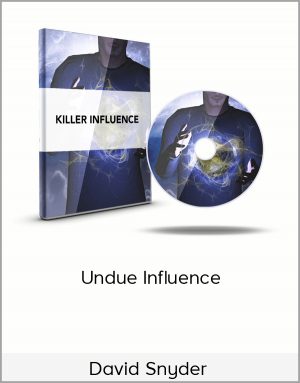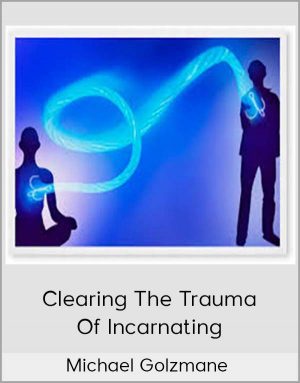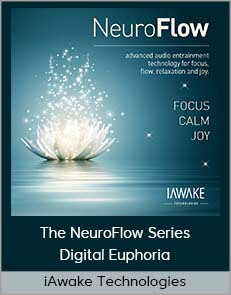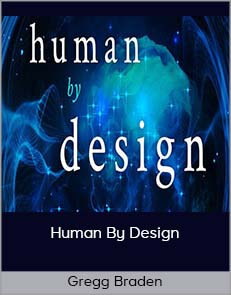Janina Fisher – Complex Trauma Certification Training
$105.00$799.00 (-87%)
When trauma inflicts its deep wounds into our clients’ minds and bodies, it leaves them feeling hopeless, desperate, and ashamed — wondering, “Why can’t I feel safe and calm like normal people?”
Janina Fisher – Complex Trauma Certification Training

Check it out: Janina Fisher – Complex Trauma Certification Training
Transform your trauma treatment outcomes and your practice as a
Certified Complex Trauma Treatment Professional!
You know how deeply trauma impacts your client’s mind, body, and emotions — and how difficult healing can be. You have clients who are constantly (and unpredictably) triggered by their traumatic experiences; controlled by emotions of shame, anxiety, anger, depression, and fear — and even turning to substance abuse, cutting, and other harmful behaviors to cope.
World-renowned expert and author Dr. Janina Fisher’s proven approach to complex trauma treatment, which is based on 40+ years of research and clinical practice, addresses the holistic impact of trauma to effectively heal deep trauma and attachment wounds so clients can break free from the past, feel safe and calm, and thrive in life.
For decades, the certification training programs on Janina’s revolutionary treatment approach have helped thousands of clinicians around the world improve their client outcomes and advance their clinical practices…and here’s your opportunity to join this elite group of clinicians as a Certified Complex Trauma Treatment Professional (CCTP/CCTP-II).
If you’re ready to become a true expert in the field of trauma treatment and master neurobiologically informed treatments that will heal trauma, save marriages and families, and help clients take back their lives, then enroll today.
Earn both your CCTP Level 1 and Level 2 Trauma Certifications with this one training!
In this two-part training course, Janina will guide you through her comprehensive approach to complex trauma treatment. Using engaging case studies, and practical/downloadable tools and worksheets, she will show you exactly what to say and do, every step of the way, to help even your most challenging trauma clients.
Here’s what’s covered in the training:
PART ONE
Certified Clinical Trauma Professional Training (CCTP): Working with the Neurobiological Legacy of Trauma
When trauma inflicts its deep wounds into our clients’ minds and bodies, it leaves them feeling hopeless, desperate, and ashamed — wondering, “Why can’t I feel safe and calm like normal people?”
Trauma has encoded itself within their brains, their nervous systems, and their bodies, beyond where traditional therapy and emotional expression can impact them. And often the client’s survival responses to post-traumatic triggers are just as damaging as the initial event.
Fortunately neuroscience, attachment research, and decades of clinical work have given us profound insight into not only why our clients have these experiences, but exactly HOW we can help them heal.
In part one, I’ll teach you my approach that brings together techniques from leading, evidence-based methods, including Sensorimotor Psychotherapy, Internal Family Systems, mindfulness, psychodynamic psychotherapy and psychoanalysis — so you can help your clients find the hope and relief they desperately long for.
Through six comprehensive modules, you’ll master proven strategies to identify and overcome your client’s post-traumatic triggers, repair deep attachment wounds, help with harmful coping strategies such as substance abuse and self-harming practices, and address overwhelming emotions like shame, anger, anxiety, fear, and depression.
You’ll end this part of the training with the education you need to become a Certified Clinical Trauma Professional – Level 1 (CCTP) and the ability to transform how the mind, body, and soul experience trauma.
Modules in part 1 include:
Module 1: Trauma and the Body
In this module, you’ll gain foundational insight into trauma’s lasting impact on the body and brain. Janina will guide you in exploring:
How to identify and understand post-traumatic triggers and symptoms that develop due to dysregulation
How to apply specific, practical techniques from Sensorimotor Psychotherapy, mindful awareness and other neurobiologically informed treatment strategies
How to help your client restore brain functioning and regulate their nervous system
Module 2: Working with Complications of Dysregulation
In module two, you’ll develop a full comprehension of why trauma clients often resort to harmful, addictive behaviors, including substance abuse, cutting, eating disorders, suicide ideation, and more. In this module, you’ll get access to:
An integrated trauma-wise treatment strategy to help clients overcome harmful behavior
Proven strategies to address the complications that arise, due to abstinence and sobriety
Practical worksheets, handouts, and exercises that you can immediately use with your clients
Module 3: Working with Traumatic Memory: Principles and Techniques
In module three, Janina will guide you through the latest neuroscience into how trauma encodes itself in our memories and continues to wreak havoc on clients through responses such as overwhelming emotions, involuntary shaking, and out-of-control movements. You’ll get access to:
Step-by-step explanations of today’s most effective methods to work with traumatic memory
Proven treatments plans that will teach you exactly what to ask and what to say when helping your clients process and resolve traumatic memories
Module 4: Disorganized Attachment, Borderline Personality Disorder, and the Traumatic Transference
Addressing traumatic attachment is a prerequisite to effective trauma treatment, but it’s challenging to repair wounds that have lasted for years, and possibly even generations. In this module, Janina will provide you with easy-to-follow illustrations and examples so you can learn:
How to identify different attachment disorders and specifically what to do to treat them
How to effectively work with your client so you can avoid becoming an attachment trigger
Module 5: The Role of Dissociation in Trauma-Related Disorders
In this module, you’ll master strategies to work with the dissociation that so often results from a traumatic experience. You’ll get access to:
Step by step instruction on how to implement the revolutionary Internal Family Systems “parts” approach within your therapeutic work to resolve your client’s inner, emotional conflicts and heal past wounds
Practical exercises that you can immediately use with your clients
Module 6: Working with Shame, Fear and Anger
Shame, fear, and anger are powerful emotions that can take control of your client’s life. In this final module, you’ll get access to:
Effective methods of using parts work, psychoeducation, somatic and mindfulness-based interventions to change your client’s relationship with these emotions
Easy-to-follow case studies and moment-to-moment illustrations so you can help your clients to take back control of their lives
PART TWO
Certified Complex Trauma Treatment Training (CCTP-II): Treatment of Complex Trauma and Dissociative Disorders
Trauma is rarely simple. If you work with complex clients — those who are chronically dysregulated, self-destructive, can’t regulate emotions and impulses, have a long history of failed treatments, or are perpetually numb — you need another level of training to offer healing and relief.
In this advanced training, through six comprehensive modules, you will learn how to apply the revolutionary insight from some of the field’s most brilliant researchers and clinicians (including Bessel van der Kolk, Dan Siegel, Dick Schwartz, Judith Herman, Stephen Porges, and more). Through step-by-step training modules, you’ll master effective techniques to understand, identify and treat complex traumatic challenges, such as:
Resistance and stuckness
Treatment-resistant depression
Therapy-destructive behavior
Vicarious traumatization
Regression
and more
After completing this part of the training, you’ll know exactly how to help complex trauma clients and have practical worksheets and resources you can immediately use with any of your client cases. Plus you’ll have the education you need to become a Certified Complex Trauma Treatment Professional – Level 2 (CCTP-II).
Modules in part 2 include:
Module 1: Introduction to the Treatment of Dissociation
In this module, you’ll further build upon your treatment strategies for treating clients with dissociation. You’ll learn:
What distinguishes ‘complex trauma’ symptoms from the symptoms of simple PTSD
How to assess and diagnose dissociative symptoms in complex trauma clients
A proven treatment model that leverages IFS parts work, mindfulness, and neuroscience insight to treat dissociative disorders
Module 2: Increasing Awareness of Dysregulated Parts and Dissociative States
In this module, Janina will guide you through in-depth instruction of how to implement Internal Family Systems and mindfulness exercises to work with dissociation and dysregulation. She’ll teach you:
Exactly what to do and what to say when working with dysregulation
How to leverage cues in your client’s facial expressions, body, and emotional signals to speed up treatment results
How to work with inner voices, and how to diagnose dissociation vs. psychosis
Module 3: Working with Traumatic Memory in Dissociative Identity Disorder (DID): Implicit Memory and Animal Defense Survival Responses
Because of the way trauma imprints within the brain, your client can be stuck reliving the traumatic experience for the rest of their lives. This module will show you:
How to safely and effectively access and process traumatic memories with DID clients
How to leverage the latest neurobiological insight to help your clients overcome the traumatic memories that dominate their lives
How to help your clients overcome the loss of a sense of time and place that results from fragmentation
Module 4: Working with Regression, Aggression and Passivity
In module four, Janina will guide you through effective Sensorimotor and IFS interventions to treat dissociative and attachment-related issues, as well as the addictive and self-destructive behaviors that clients use to cope with their trauma. You’ll get access to:
Powerful, neuroscience-informed strategies to help clients “dis-identify” with symptoms of shame and depression
Proven techniques to overcome “controlling strategies” in clients with disorganized attachment
Interventions for addressing chronic depressive states
Module 5: Traumatic Attachment and the Treatment of Dissociative Disorders
Join Janina for this in-depth module that will empower you with specific IFS strategies to repair internal attachment issues. Learn how to:
Work with even the most challenging clients who can’t engage with your therapy techniques
Help your clients create comfort, reassurance, acceptance, and compassion among their internal “parts”
Utilize visualization techniques for repairing childhood attachment failure
Module 6: Integration and Healing
In this final module, Janina will show you how to achieve lasting healing outcomes through the lens of some of trauma treatment’s most effective models. You’ll discover how to help your clients:
Experience less triggering and “earn” secure attachment
Access self-acceptance and compassion in the healing process
Live a rich, rewarding and meaningful life
PART 1 Learning Objectives:
Session I: Trauma and the Body
Objectives:
Demonstrate knowledge of three neurobiologically-based trauma responses and articulate how this information may inform choice of treatment interventions.
Explain how the somatosensory and autonomic effects of trauma exacerbate symptoms of PTSD in clients.
Assess the role and treatment implications of procedural learning and memory in client presentations.
Incorporate sensorimotor interventions into treatments to decrease symptoms of PTSD in clients.
Session II
Working with the Complications of Dysregulation: Addictions, Eating Disorders, & Self-Destructive Behavior
Objectives:
Assess the relationship between autonomic dysregulation and addictive or self-destructive behavior in relation to assessment and treatment planning.
Articulate the necessity for an integrated treatment of trauma and addictive or suicidal behavior to improve treatment outcomes.
Assess appropriate cognitive-behavioral techniques for treating autonomic dysregulation in clients.
Specify three somatic techniques for regulating autonomic arousal traumatic reactions.
Session III
Working with Traumatic Memory: Principles and Techniques
Objectives:
Define ‘implicit memory’ and breakdown its role in post-traumatic stress disorders
Explain potential complications of addressing narrative memories of traumatic events in treatment sessions.
Specify three interventions that address these complications and ensure safe, effective processing.
Analyze the efficacy of these interventions and distinguish the signs that traumatic memory has been sufficiently processed.
Session IV
Disorganized Attachment and the Traumatic Transference
Objectives:
Outline the root causes of ‘disorganized attachment’ status in children and its clinical implications.
Specify the symptoms and difficulties associated
with disorganized attachment in relation to assessment and treatment planning.
Articulate the role of disorganized attachment on therapeutic transference/countertransference.
4. Utilize clinical strategies that reduce the complications of traumatic attachment in clients.
Session V
The Role of Dissociation in Trauma-Related Disorders
Objectives;
Differentiate ‘dissociative states’ versus ‘structural dissociation’ as symptoms of trauma and express their treatment implications.
2. Evaluate the role of structural dissociation in the treatment of complex trauma and personality disorders.
3. Explain common trauma-related internal conflicts and their impact on clients in the context of treatment models.
4. Utilize mindfulness-based interventions to address resolution of internal conflicts in clients
Session VI
Working with Shame, Fear and Anger
Objectives:
Articulate the role of shame as an adaptation to trauma and its treatment implications.
2. Specify the roles of fear and anger as animal defense survival responses to traumatic experiences in clients.
Demonstrate use of both somatic and cognitive interventions to decrease shame, fear and anger in clients.
Explain the role of re-framing in the successful treatment of post-traumatic emotional responses.
PART 1 OUTLINE
Session I: Trauma and the Body
How the body and brain respond to threat
Implicit remembering as the hallmark of trauma-related disorders
Triggers and triggering
The long-term somatosensory and psychological effects of traumatic experiences
Understanding trauma-related procedural learning
Working with the traumatized nervous system
Restoration of precortical functioning
Increasing client ability to regulate the nervous system and tolerate triggering
Session II: Working with Complications of Dysregulation
The consequences of autonomic dysregulation
Addictive behavior
Eating Disorders
Suicidal and self-harming behavior
Post-traumatic complications of abstinence and sobriety
An integrated treatment for trauma and unsafe/addictive behavior
Top-down approaches to regulating dysregulation
Bottom-up somatic approaches to regulating dysregulation
Differentiating unsafe versus ‘safer’ versus safe behavior
III. Session III: Working with Traumatic Memory: Principles and Techniques
What brain science has taught us about traumatic memory
Recognizing and understanding implicit memory in client presentations
Do we treat traumatic events? Or do we treat their consequences?
Remembering vs. reprocessing vs. repairing
‘Telling the story’
Resolving the implicit memories
How do we know when memories have been adequately resolved?
Creating a healing story
Session IV: Disorganized Attachment and the Traumatic Transference
Attachment and trauma
The effect of having attachment figures who are neglectful or abusive
“Frightening and frightened” parenting
Disorganized attachment and its consequences
Understanding the effect of disorganized attachment on the therapeutic relationship
Traumatic transference challenges
The therapist as a trigger and a neurobiological regulator
Using the social engagement system to overcome the challenges
Session V: The Role of Dissociation in Trauma-Related Disorders
Dissociation: normal versus pathological dissociation
Dissociative states versus structural dissociation
Understanding the structural dissociation model as a trauma model
Using mindfulness techniques to identify emotional and behavioral responses as ‘parts’
Recognizing internal conflicts as survival-related conflicts driven by structurally dissociated parts
Mindfulness-based interventions to strengthen client resources and prefrontal functioning
Developing empathic relationships to one’s parts
Resolving inner conflicts and healing the past
Session VI: Working with Shame, Fear and Anger
The role of emotion in trauma treatment
Shame as a survival strategy
Using somatic and mindfulness-based interventions to address the effects of shame
Fear as an animal defense response
Changing client relationships to fear
Anger as an animal defense response
Re-framing anger as a ‘bodyguard’ or protection
Using somatic and mindfulness-based interventions to address fear and anger
PART TWO
Program Information
Objectives
Session I – Introduction to the Treatment of Dissociation
Objectives:
Describe three signs or symptoms of ‘complex trauma’
Articulate the role of the Structural Dissociation model in trauma treatment
Discriminate symptoms caused by activity of trauma-related parts
Describe the use of mindfulness-based techniques in the treatment of dissociation
Session II – Increasing Awareness of Dysregulated Parts and Dissociative States
Objectives:
Identify signs of dissociative parts observed in physical presentation and facial expression
Differentiate characteristics of fight, flight, freeze, attach and submit parts
Define the term ‘blending’ as it applies to structurally dissociated parts
Recognize and describe dissociative “switching”
Session III – Working with Traumatic Memory in DID: Implicit Memory and Animal Defense Survival Responses
Objectives:
Differentiate implicit memories versus situational emotional responses
Identify role of animal defense survival responses in dissociative disorders and their relationship to traumatic memory
Identify trauma-related internal conflicts frequently observed in trauma-related disorders
Discuss indications and best practices for processing traumatic memories
Session IV – Working with Regression, Aggression and Passivity
Objectives:
Articulate the role of regression and aggression as survival responses to threat
Specify verbal and somatic interventions for working with client dependency and/or aggression
Articulate the role of depression as an adaptation to trauma
Specify cognitive and somatic interventions for addressing chronic depressive states
Session V – Traumatic Attachment and the Treatment of Dissociative Disorders
Objectives:
Discuss the concept of “controlling strategies” as a complication of disorganized attachment
Identify the interaction between traumatic attachment and self-destructive behavior
Articulate the effects of traumatic/disorganized attachment on the transference
Demonstrate uses of right brain-to right brain communication to address attachment-related issues
Discuss the use of the social engagement system
Session VI – Integration and Healing
Objectives:
Articulate the traditional view of ‘integration’ as it pertains to dissociative disorders treatment
Identify interventions for increasing internal communication and cooperation among parts
Define the ‘negativity bias’ and its effects on psychological health and resilience
Outline the role of self-acceptance and compassion in the healing process
Outline
Session I – Introduction to the Treatment of Dissociation
What distinguishes ‘complex trauma’ symptoms from the symptoms of simple PTSD?
The Structural Dissociation model as a trauma model
Assessment and diagnosis of dissociative symptoms
Assessment questions and measures
Mindfulness-based techniques in the treatment of dissociation
Teaching mindfulness skills to fragmented individuals
Differentiating structurally dissociated parts of the personality
Using the language of parts
Session II – Increasing Awareness of Dysregulated Parts and Dissociative States
Treatment challenges in working with complex trauma and dissociation
Identifying signs and symptoms of dissociative parts
Differentiating the presence of fight, flight, freeze, attach and submit parts
Increasing dual awareness
Dissociative switching and “blending”
Helping clients increase their ability to “unblend” from trauma-related parts
Helping clients decrease dissociative “switching”
Distinguishing psychotic versus dissociative symptoms
Session III – Working with Traumatic Memory in DID: Implicit Memory and Animal Defense Survival Responses
Memory systems: explicit and implicit, voluntary versus involuntary
The role of procedural memory in complex trauma
Helping clients differentiate implicit and procedural memories from situational responses
Dissociative compartmentalization as a complication in memory processing
Loss of a sense of time and place due to fragmentation
Re-thinking the role of witnessing client’s traumatic experiences
Discuss indications and best practices for processing traumatic memories in this population
Session IV – Working with Regression, Aggression and Passivity
Traumatic attachment and animal defenses
The “controlling strategies” in individuals with disorganized attachment
Regression and aggression as controlling strategies driven by trauma-related parts
Working with regressive states and child parts
Aggression in therapy: devaluing and self-destructive behavior
Working with verbally abusive and devaluing parts
Depressive states as an adaptation to trauma
Interventions for addressing chronic depressive states
Session V – Traumatic Transference in the Treatment of Dissociative Disorders
Stimulation of the attachment system in therapeutic relationships
Effects of traumatic/disorganized attachment on the transference
Why some clients become more dysregulated rather than less
Co-regulation and right brain-to right brain communication
How therapists can use contingent co-regulation in treatment
Internal attachment versus self-alienation
Using the social engagement system
Rupture and repair: visualization techniques for repairing childhood attachment failure
Session VI – Integration and Healing
‘Integration’ as the goal of dissociative disorders treatment
What does it mean to be “integrated”?
The evolution of treatment models for dissociative disorders
Identify interventions for increasing internal communication and cooperation among parts
Markers of progress in fragmented individuals
How should clients and therapists define “healing”?
Self-acceptance and compassion in the healing process
Best practices in trauma treatment
Enroll today and you’ll get these FREE Bonus items
FREE 1-Year IATP Membership
As a Mental Health Professional who values continuing education and furthering your knowledge to better treat your clients, you are invited to become a member of the International Association of Trauma Professionals™. Being Certified and an IATP member tells your clients and the mental health community that you are a knowledgeable trauma professional.
Benefits include:
$25 Discount on all PESI Live One-day and Multi-day seminars
10% Discount on all digital streaming seminars, DVD’s and CD’s. Online courses are excluded from this discount
Traumatology Tool Kit (assessment instruments, treatment protocols)
FREE Worksheet/Video to Help the Traumatized Brain
Re-activate the trauma impacted brain with the help of Janina’s simple but effective trauma treatment worksheets. These take-home handouts give your clients structured tools that leverage the latest neuroscience insight to help your clients think, express themselves, and finally experience lasting therapeutic improvement.



















